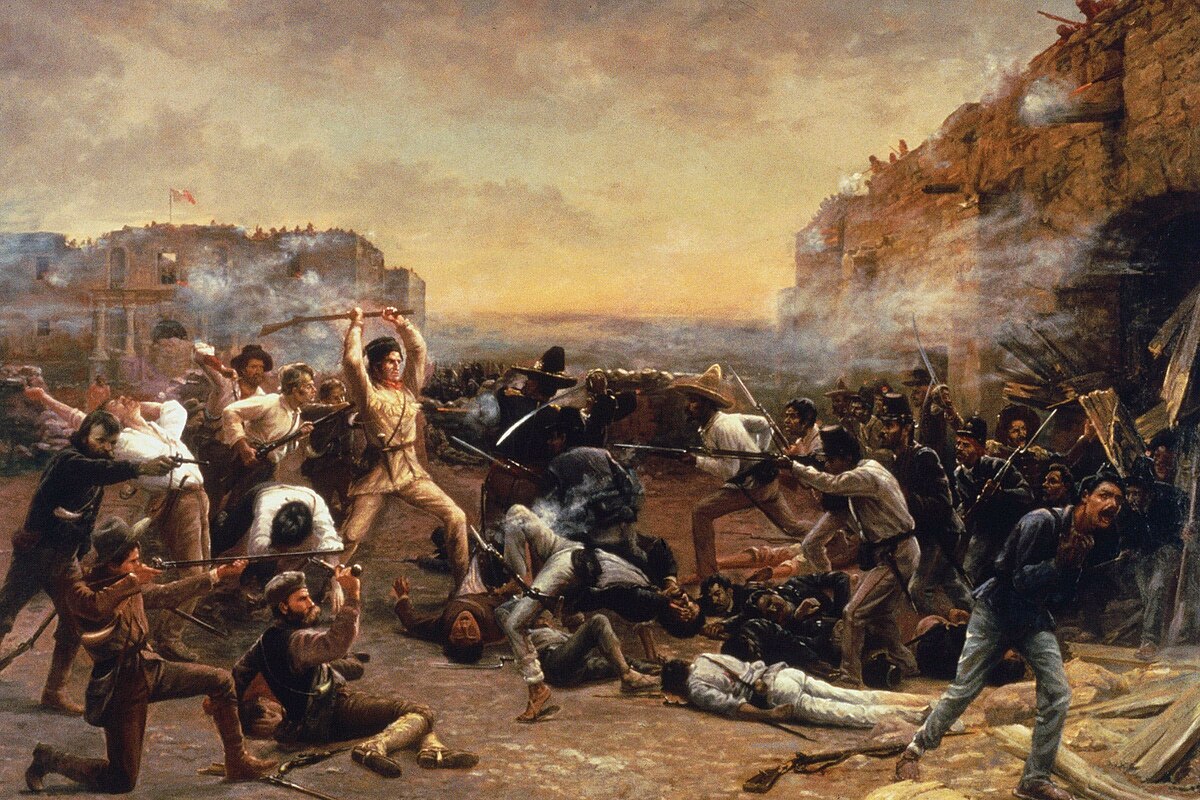
Texas Revolution
Texas, USAThe Texas revolution began in October 1835, after a decade of political and cultural clashes between the Mexican government and the increasingly large population of Anglo-American settlers in Texas. The Mexican government had become increasingly centralized and the rights of its citizens had become increasingly curtailed, particularly regarding immigration from the United States. Mexico had officially abolished slavery in Texas in 1829, and the desire of Anglo Texans to maintain the institution of chattel slavery in Texas was also a major cause of secession. Colonists and Tejanos disagreed on whether the ultimate goal was independence or a return to the Mexican Constitution of 1824. While delegates at the Consultation (provisional government) debated the war's motives, Texians and a flood of volunteers from the United States defeated the small garrisons of Mexican soldiers by mid-December 1835. The Consultation declined to declare independence and installed an interim government, whose infighting led to political paralysis and a dearth of effective governance in Texas. An ill-conceived proposal to invade Matamoros siphoned much-needed volunteers and provisions from the fledgling Texian Army. In March 1836, a second political convention declared independence and appointed leadership for the new Republic of Texas.
Determined to avenge Mexico's honor, Santa Anna vowed to personally retake Texas. His Army of Operations entered Texas in mid-February 1836 and found the Texians completely unprepared. Mexican General José de Urrea led a contingent of troops on the Goliad Campaign up the Texas coast, defeating all Texian troops in his path and executing most of those who surrendered. Santa Anna led a larger force to San Antonio de Béxar (or Béxar), where his troops defeated the Texian garrison in the Battle of the Alamo, killing almost all of the defenders.
A newly created Texian army under the command of Sam Houston was constantly on the move, while terrified civilians fled with the army, in a melee known as the Runaway Scrape. On March 31, Houston paused his men at Groce's Landing on the Brazos River, and for the next two weeks, the Texians received rigorous military training. Becoming complacent and underestimating the strength of his foes, Santa Anna further subdivided his troops. On April 21, Houston's army staged a surprise assault on Santa Anna and his vanguard force at the Battle of San Jacinto. The Mexican troops were quickly routed, and vengeful Texians executed many who tried to surrender. Santa Anna was taken hostage; in exchange for his life, he ordered the Mexican army to retreat south of the Rio Grande. Mexico refused to recognize the Republic of Texas, and intermittent conflicts between the two countries continued into the 1840s. The annexation of Texas as the 28th state of the United States, in 1845, led directly to the Mexican–American War.
